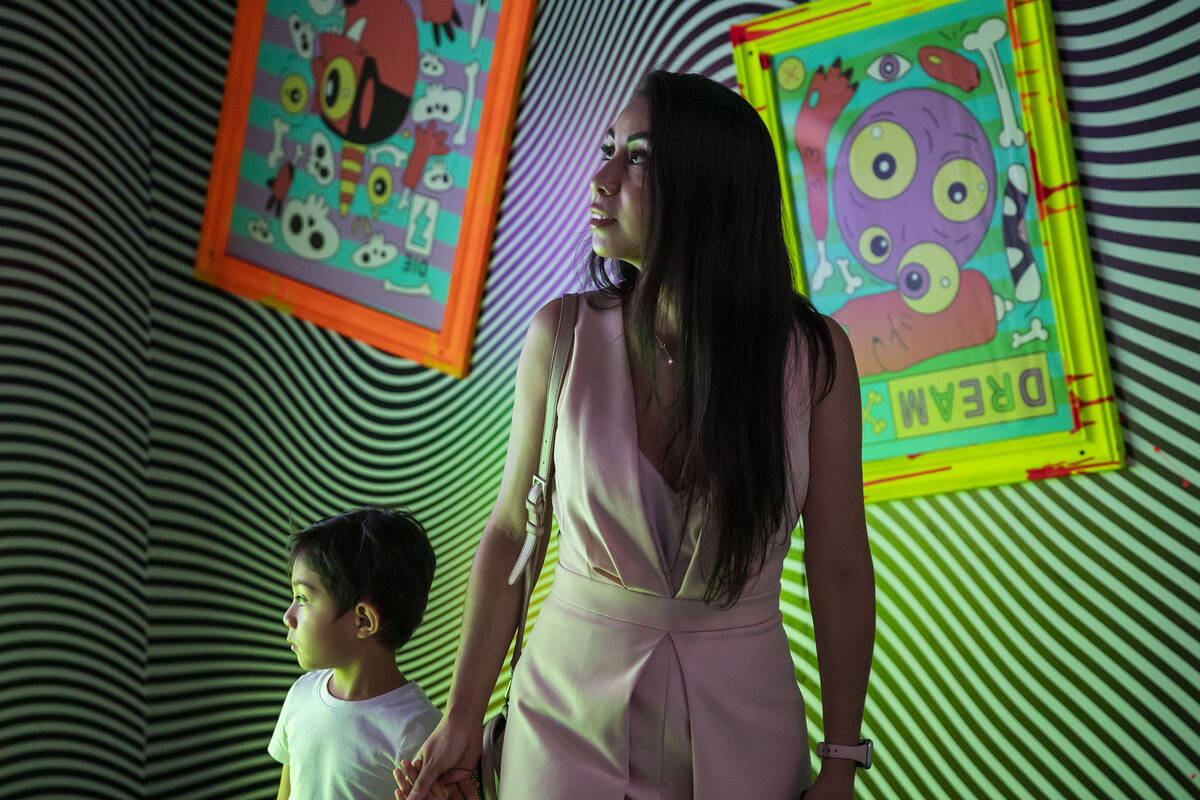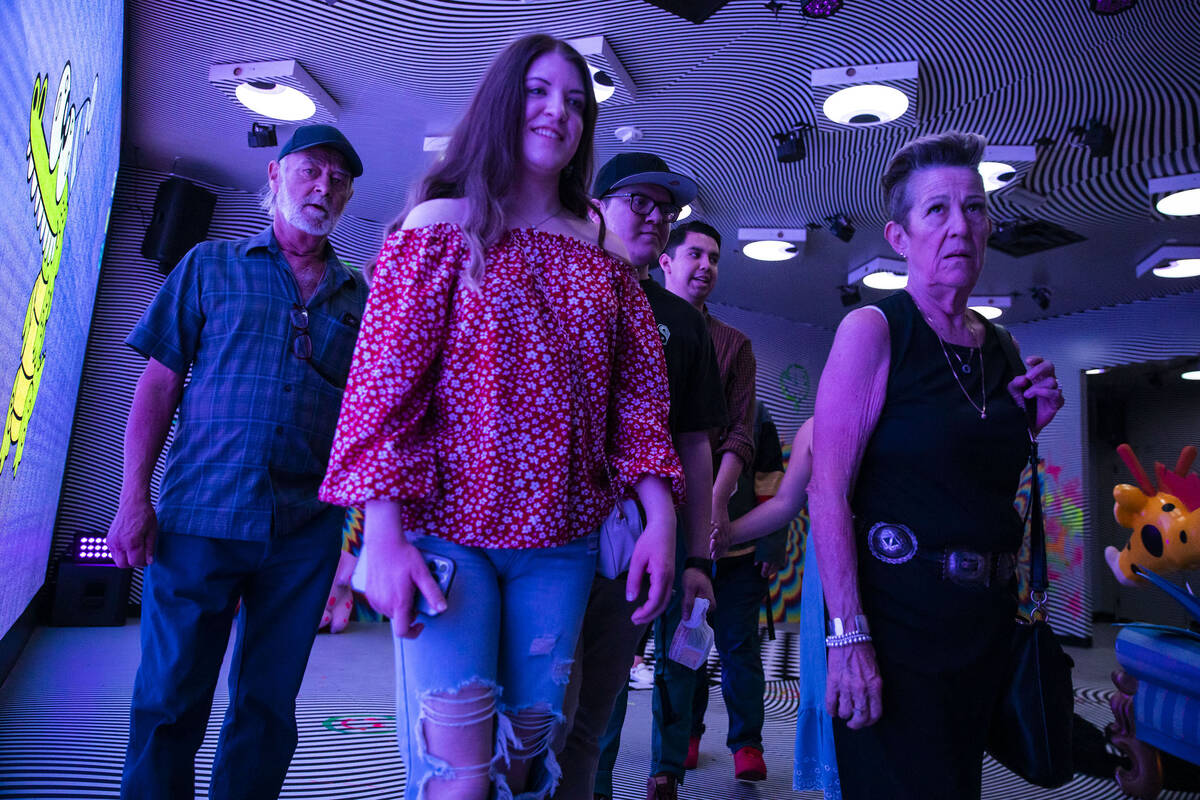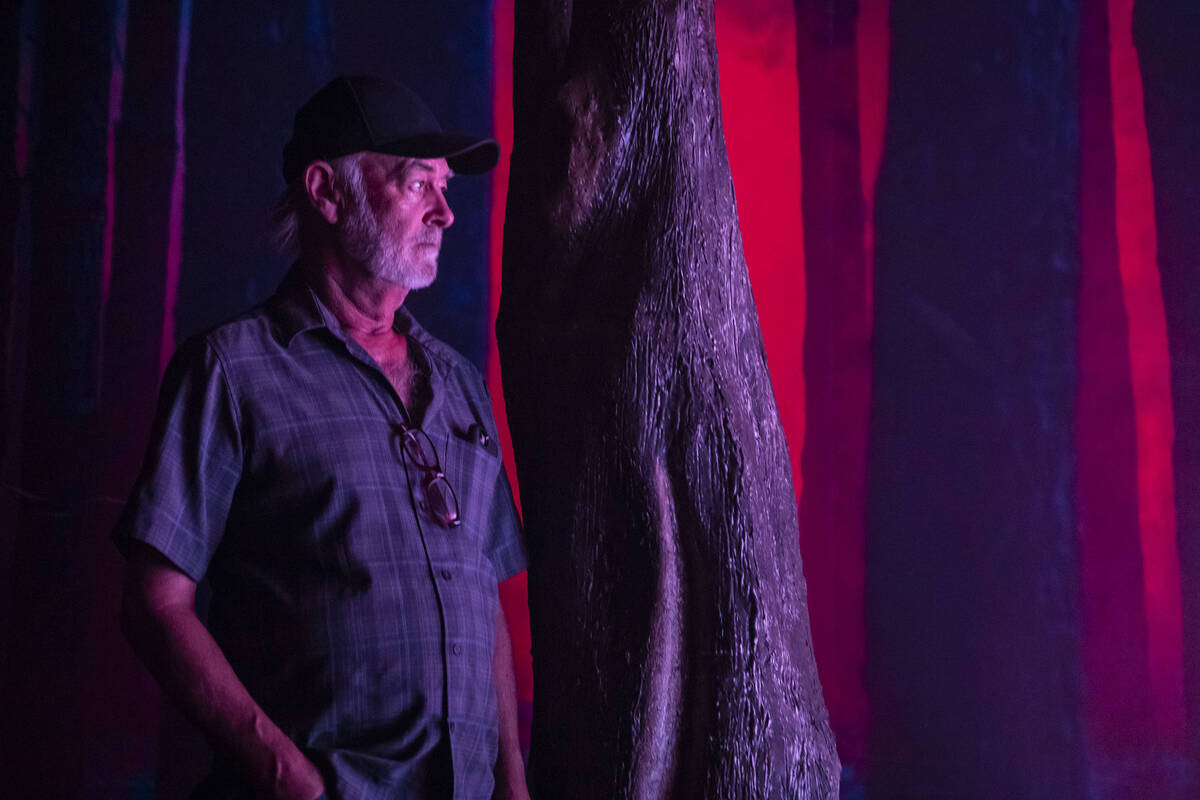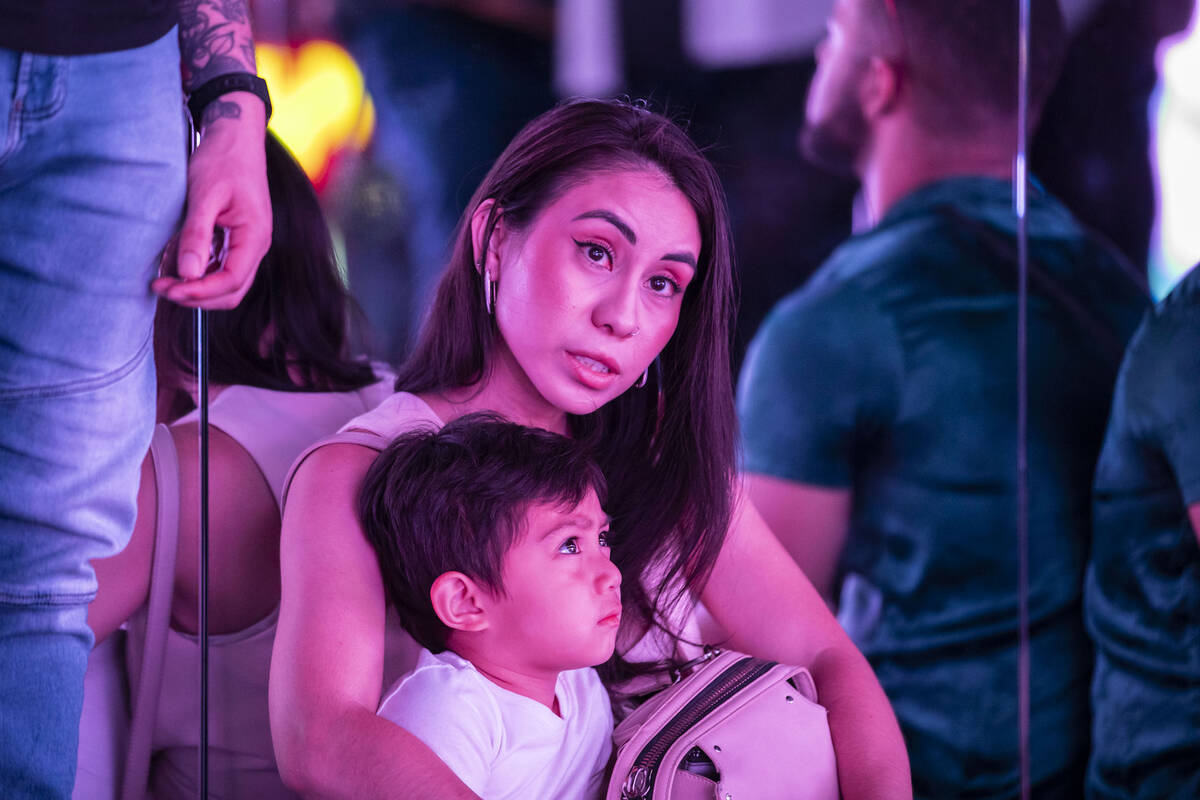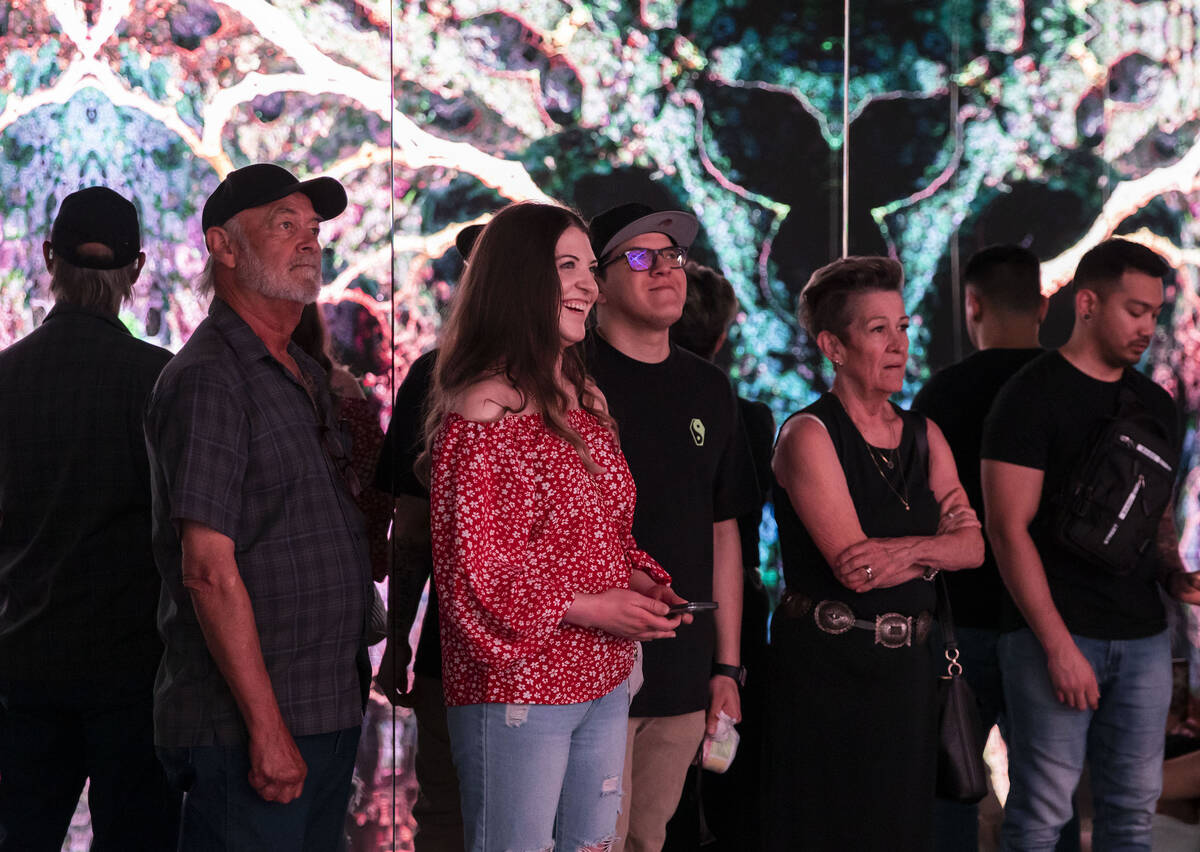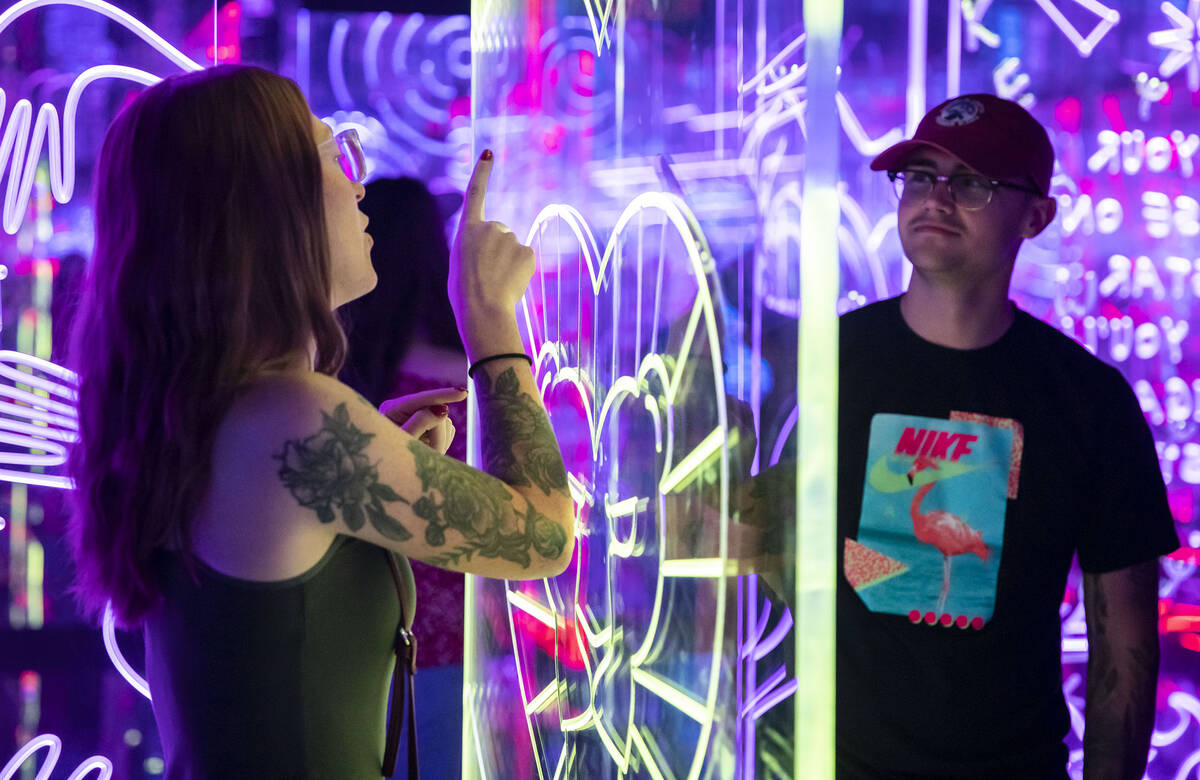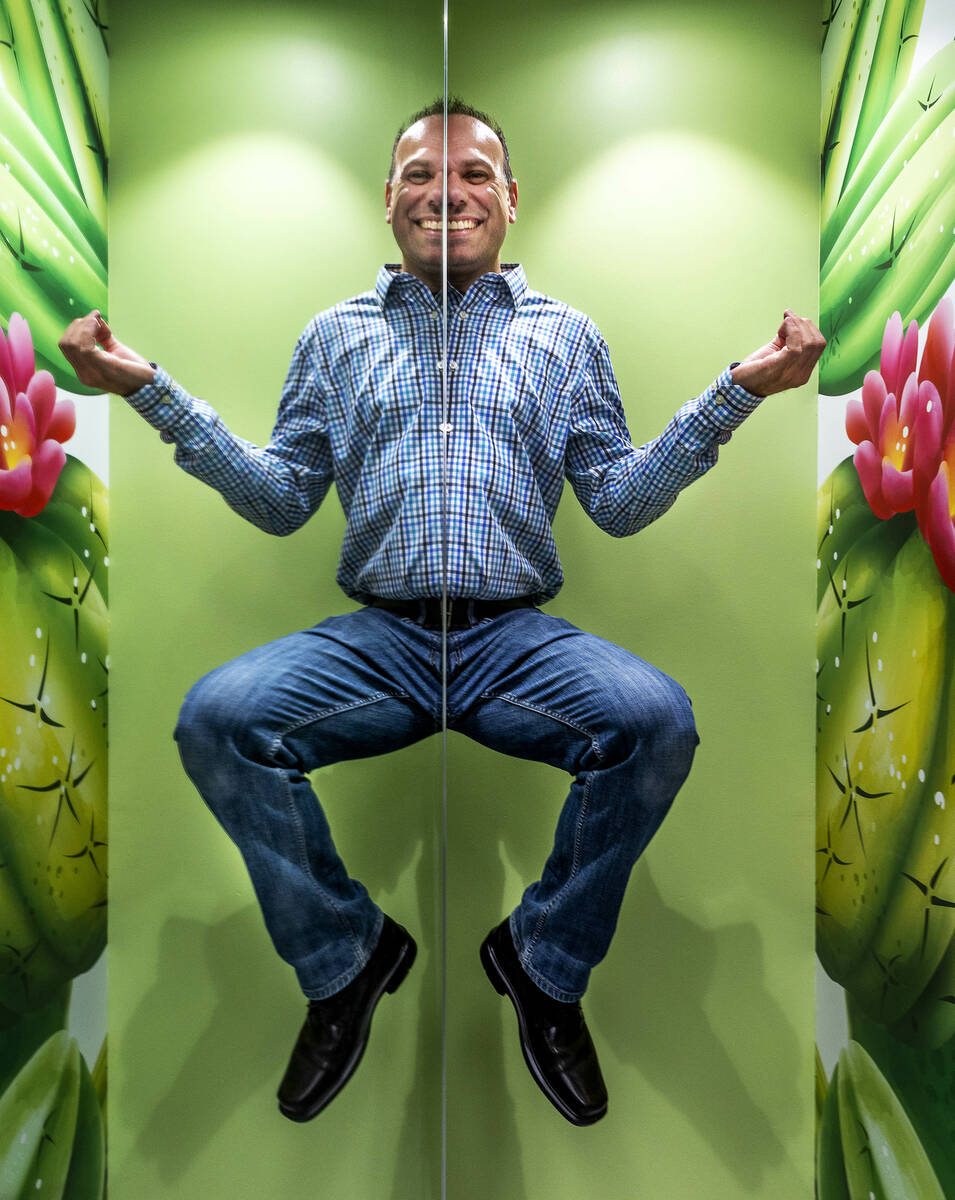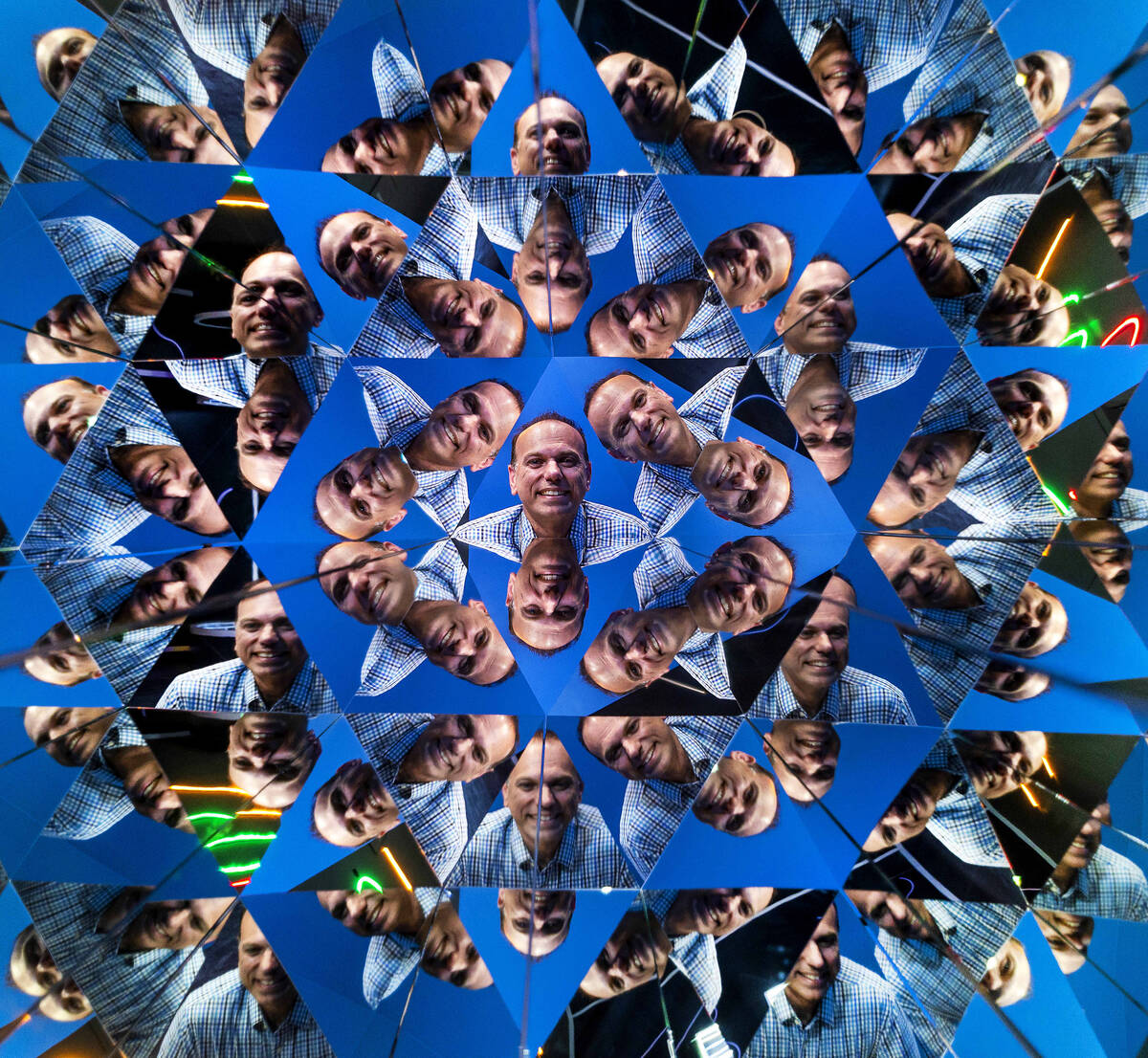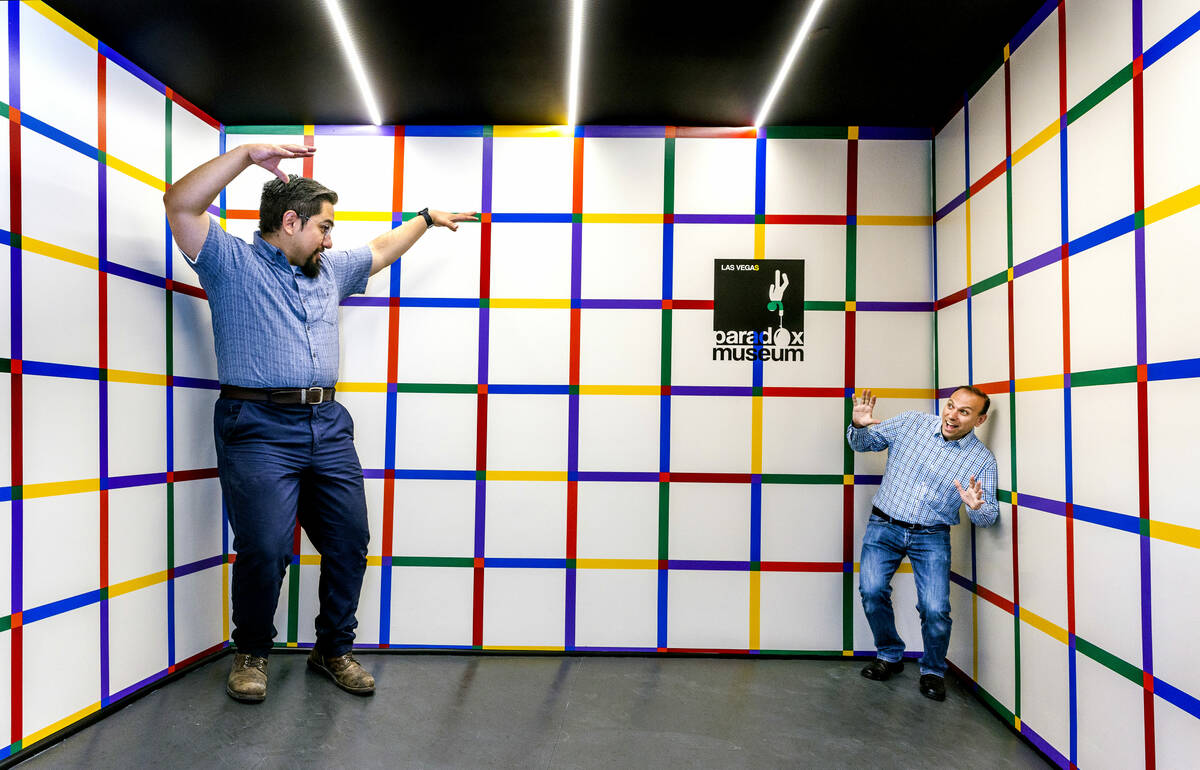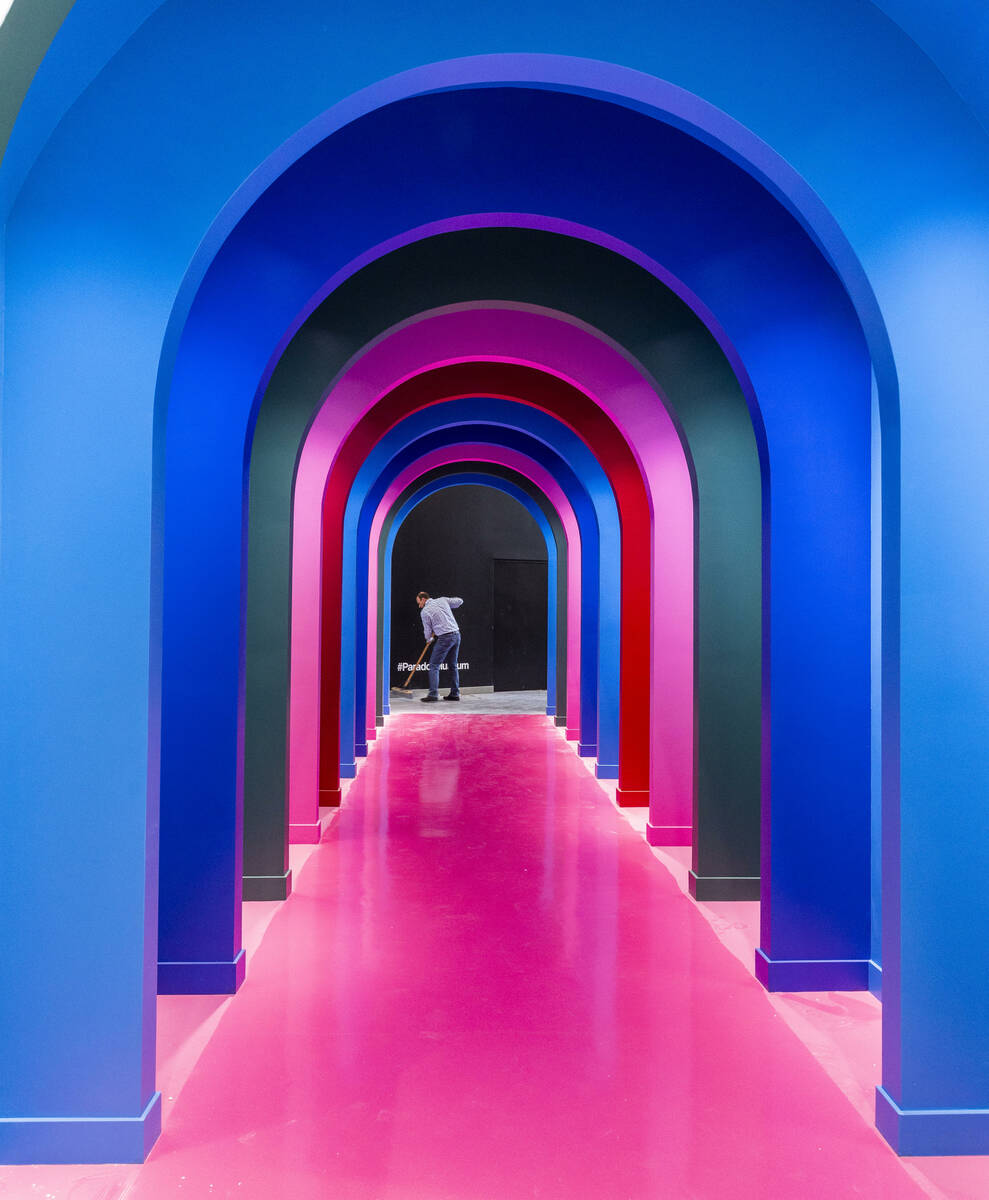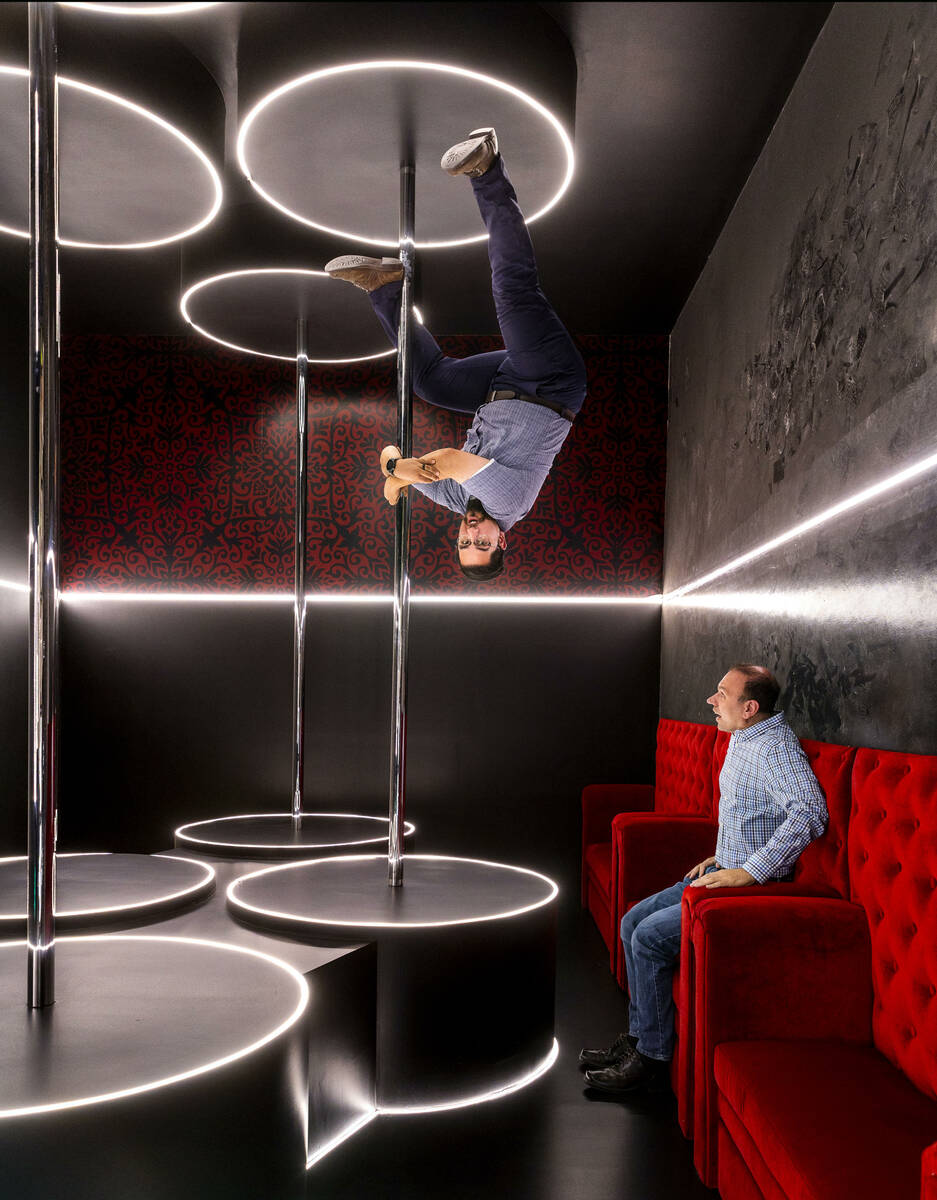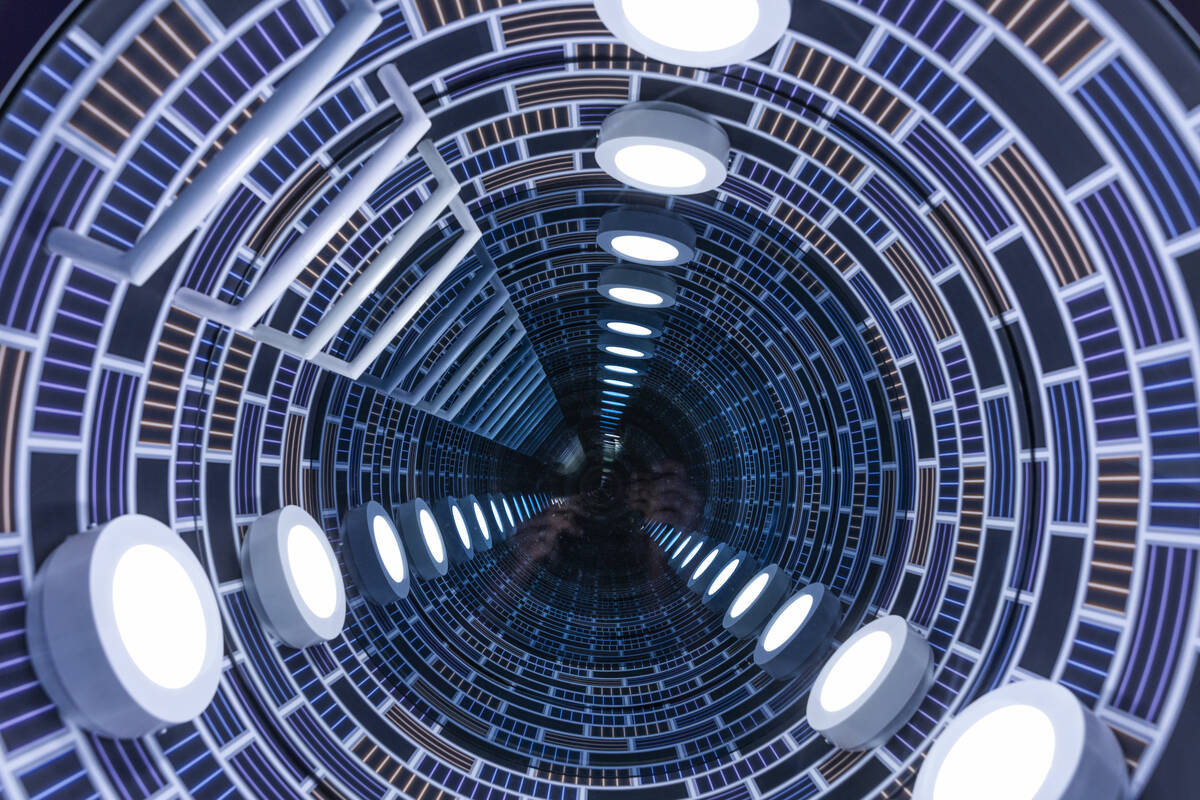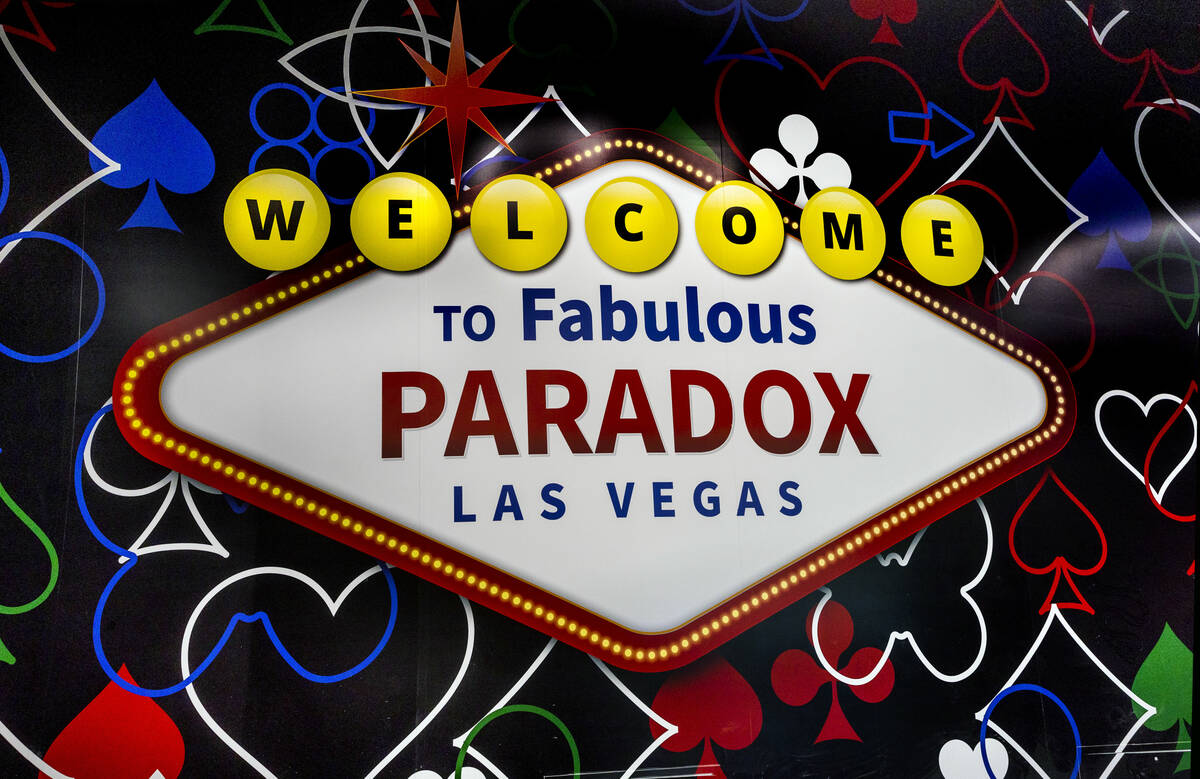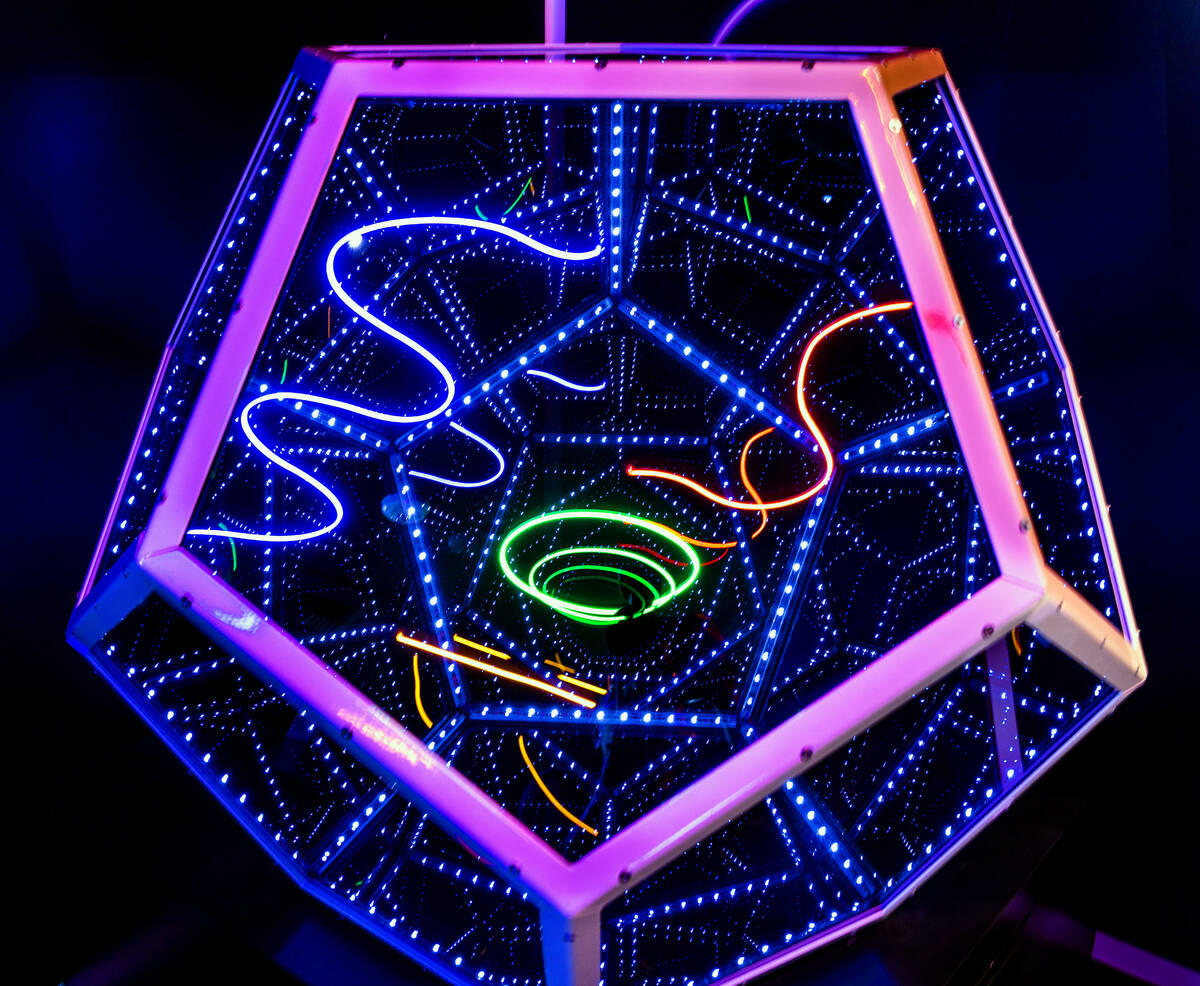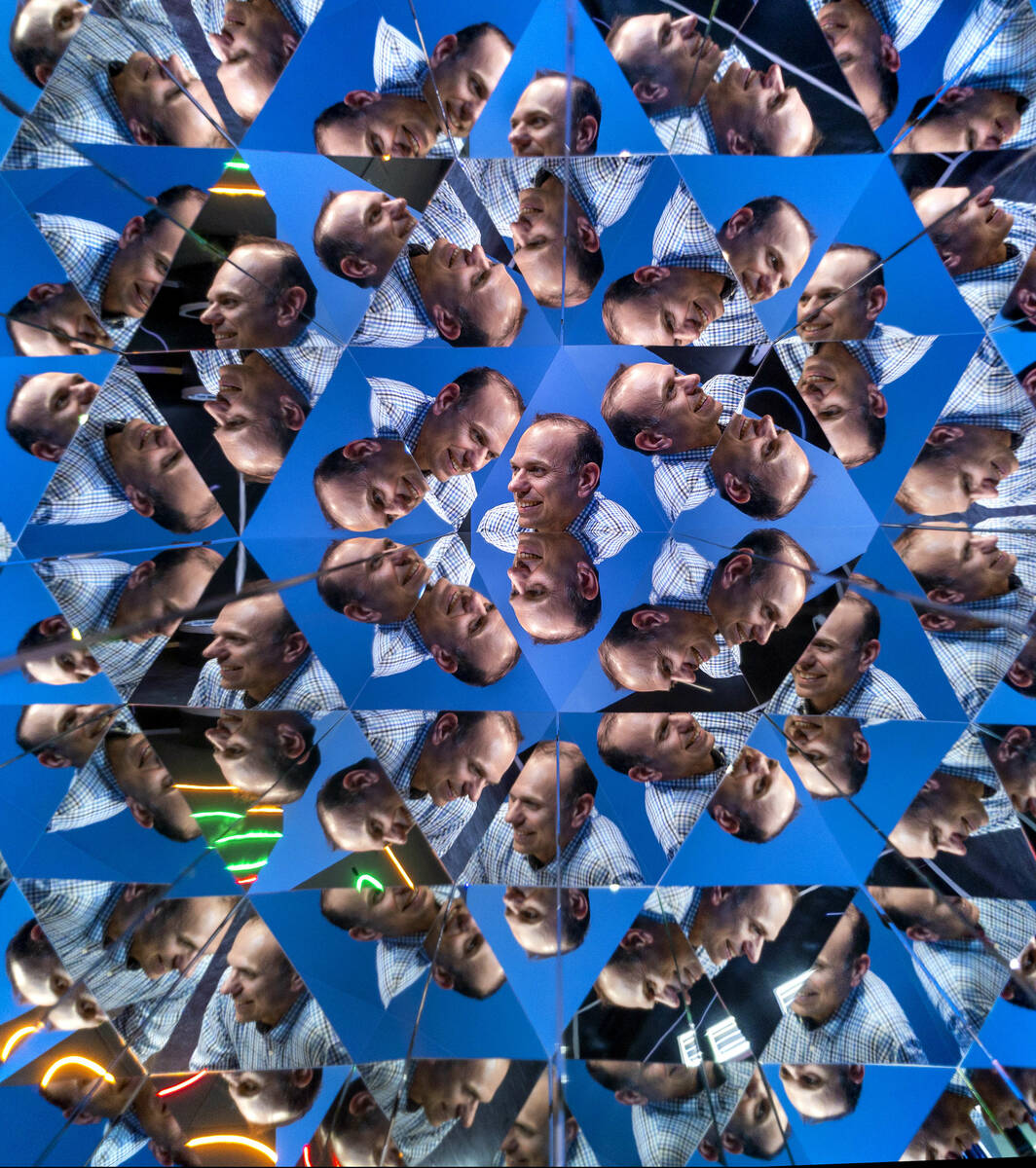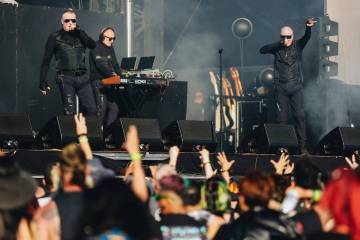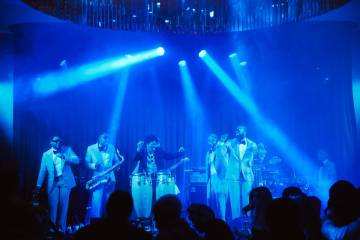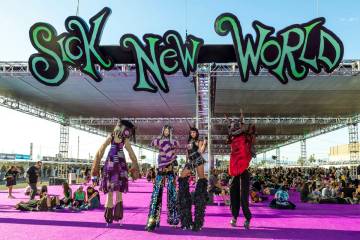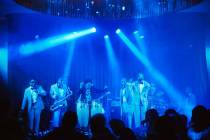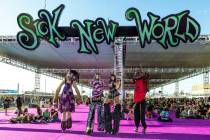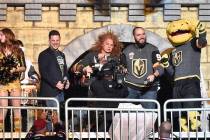Inside 2 new mind-bending immersive experiences
You stare down, down, down to no end, eyes searching for something they’ll never find: a bottom.
The glass cube beneath your feet appears to go on forever, a gleaming abyss.
Standing atop it, peering into its well-polished depths, creates a vertiginous sensation — you feel like you’re plunging into infinity.
In reality, you’re just freaking yourself out at the new Paradox Museum on the Strip on a Thursday afternoon.
“People get kind of scared to stand on it,” notes our tour guide, Billy Pierro, Paradox’s sales and marketing manager. “They think they’re going to fall through.”
It’s all a trick: The box is only around a foot tall, the eye-fooling effect created by mirrors.
This is what the Paradox Museum is all about: tricking the senses in an 11,000-square-foot labyrinth of illusions, interactive elements and countless photo-ops.
It’s a lot to take in — 90 attractions total — the connective tissue between them all is that they’re designed to leave you questioning what it is you’re actually seeing.
“This is where it looks like your head is on top of a table, like it has been chopped off,” explains Pierro, pointing out an attraction that makes it appear as if your skull has been served up for dinner.
Paradox’s opening adds to a boom in immersive entertainment experiences in Vegas. There’s Area15’s Omega Mart and the Illuminarium; the Perception digital art museum; the Immersive Van Gogh and Immersive Disney Animation attractions; the FlyOver flight simulator; the Fantasy Lab at Fashion Show mall (more on that one shortly); and the forthcoming Play Playground, debuting at Luxor later this year.
Their popularity is likely a product of the times: In an era when so much of our lives is spent gazing at screens, entertainment options that blend technological wizardry with a more experiential, hands-on dimension would seem to have a natural appeal.
Paradox taps into both, and since the museum is posited on toying with one’s perceptions, the idea is to create an experience as individualized as the person partaking in it.
“You will see it by your perspective; you’re going to see it based on your experience,” says Marc Gregory Tipton, Paradox’s regional sales and marketing manager. “When you get here, each one of you is going to have a different perspective. It’s your own story.”
Fantasy Lab becomes a reality
“Time to dream.”
So commands our narrator, his disembodied, pre-recorded voice floating through a ballet of luminosity and swelling music in this otherwise dark room, pulsating strips of light dangling from the ceiling like the long, thin leaves of a weeping willow.
It takes time for eyes to adjust in these dimly lit surroundings, the Fantasy Lab experience having just begun.
Next up is the Insomnia Room, one of seven here. Strewn with Day-Glo clocks and spiral videos, it feels like entering a walk-in blacklight poster.
“Each room is a different representation of a dream,” explains Derrick Diggs, assistant GM at the Fantasy Lab. “We have some stuff you can interact with, some LEDs, some projection stuff, some stuff you can touch.”
Bedazzled, butterfly- and snake-shaped disco balls preface the Kaleidoscope Room, whose incredible, floor-to-ceiling video screen flashes with images of aquatic life so detailed and lifelike, it’s as if we’ve been plunged into the ocean.
In the Circus Room, guests twirl illuminated hula hoops and play Jenga on the floor amid walls brightened by video images of cartoon animals.
“When you go to the circus, you pay to watch the animals put on a show,” Diggs says. “In this situation, we want the guests to be the animals that put on the show.”
Outside this maze of eye-popping interactivity, Fantasy Lab doubles as a restaurant and bar, with specialty cocktails inspired by each room.
There’s also a new 21-and-over, nighttime component titled “Midnight Dreams,” which runs from 8 p.m. to 1 a.m. Thursdays through Saturdays, where visitors can roam the rooms freely with drinks in hand. (During the day, the Fantasy Lab experience is a guided tour in which visitors have 10 minutes to spend in each room.)
As we make our way from one room to the next, our journey concludes in a space that looks like outer space, images of planets and stars glowing on the video screens that surround us.
We’ve come full circle.
“Wake up,” the screens instruct. “Make your dreams come true.”
A mind-bending Paradox
The eyes of Elvis are following us.
Back at the Paradox Museum, we stroll through a Vegas-themed room, which — in addition to a wall adorned with the roving peepers of The King — will boast specialty slot machines offering jackpots of optical illusions.
Though there are 11 Paradox Museums throughout the world — six already open and another five in the making, located everywhere from Chicago to Barcelona — each one is designed to have some local flair.
“Though you may have seen the exhibit in previous locations, the area and theming is always curated to the local culture,” Tipton explains. “It comes across as having a local feel.”
Still, there are some staple attractions, like the Ames Room — named after ophthalmologist Adelbert Ames Jr., who created the concept — where visitors appear smaller or larger depending on where they’re standing.
“This always bottlenecks,” Pierro notes as we pass the Paradox Blender, where two visitors can merge their features together by standing on opposite sides of a series of mirrors. “People always stop here to spend some time with this.”
There are plenty of mind-bending attractions here, like an elevator that makes you feel like you’re shuttling between floors even though it’s standing still and another Paradox trademark: a couch where a pair of guests can make it appear as if one person’s body has been cleaved in half.
Like the Fantasy Lab, there’s also a kaleidoscope room, where you can gaze into one end of the optical instrument and have someone take a picture of your face colorfully multiplied numerous times in the other end.
The museum takes about an hour to an hour and a half to experience fully — though it might take you substantially longer to articulate exactly what you’ve just experienced.
“We want you to do the things that you can’t do in museums,” Tipton explains. “Every single exhibit is interactive. As soon as you enter, everything could be an exhibit.
“It’s difficult to express,” he acknowledges with a smile, “until you get here.”
Contact Jason Bracelin at jbracelin@reviewjournal.com or 702-383-0476. Follow @jbracelin76 on Instagram.
Preview
What: The Fantasy Lab
Where: Inside Fashion Show mall
When: Open daily; hours vary. "Midnight Dreams" 21-and-older sessions 8 p.m.-1 a.m. Thursdays-Saturdays
Tickets: $20-$75; fantasylablv.com
What: Paradox Museum
Where: 3767 Las Vegas Blvd. South, across from New York-New York
When: Open noon-10 p.m. daily
Tickets: $33-$37; paradoxmuseumlasvegas.com



